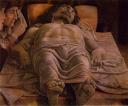This is a response to Prof. Sample’s comment on Aliens, but it’s long and the format doesn’t work very well in the comment section, so I’ll put it here too:
I wasn’t really responding to Scholes so much as I was responding to “Story of an Hour;” offering, in a way, an interpretation for how to teach it. Chopin’s tale isn’t just a feminist parable, nor a lesson about the economy of storytelling in general; it also follows the conventions of an elaborate joke. The reader response can be similar to an interpretation found in Blau of “Any Minute Mom Should Come Blasting Through the Door.” This interpretation found the piece to be an extended verbal joke based on exaggerated forms of hyperbole. In “Story of an Hour,” there is a dissonance between what’s at stake–Mrs. Mallard’s freedom, her autonomy, her happiness, her very life–and the fairness, or lack thereof, of the abrupt finish. Chopin waxes poetic about grief, about misery, about the idiosyncrasies of life that make it worth living or worth exiting. Then, she finishes with a quick “Oops. Her husband is still alive…aaaaaand now she’s dead.” The only thing missing is the soundtrack going Wah-wah-wah-waaaaaaaaaah.
Of course, this reading overlooks the subtext of that final sentence–“When the doctors came they said she had died of heart disease–of the joy that kills.”–undermining the duality of the juxtaposed superficial and deeper meanings: she was being rewarded/she was being punished; she died of happiness/she died of misery; her heart broke with joy/she was heartbroken. But those meanings also serve as commentary on the feminist reading. No matter the eloquence of feminine liberation, it’s attainment is still as ephemeral as a dream that evaporates upon waking. Snap of a finger. The passage of a few sentences. The beat before the punch line.
I believe more fiction utilizes this technique than we recognize. As for “Aliens!,” it’s not that good a story, but I do make use of a punch line rooted in human narcissism. When the little purple hermaphrodite informs Dan that he has effectively annihilated an entire species, Dan’s essential reaction is to mourn the loss of what would’ve been a cushy life: “What happens to me?”
It’s also a simple mockery of the human desire for exploration and understanding of our own universe. Here exists an entire culture that Dan can barely fathom–sometimes noble, sometimes petty, bizarre in appearance and action, prone to exploding–and it’s gone before he can even recognize that its destruction was his fault. I suppose it’s a bit too self-consciously irreverent, only showing a small inclination towards that melancholy near the end; but, in my own way, I tried to set it up with a punch line that mirrored what I understood about Chopin’s story, and about storytelling in general.
In a class last semester, we spoke of a technique for understanding a text that involved transcription. Copying the text to see how the author went about writing it. Well, if writing is merely thinking on a page, writing a story that duplicates what the student understood to be the intent of the original is arguably the best way to think about it, regardless of how successful the duplication. After all, inspiration does not mean imitation.
My comment about Scholes was not really connected; I was merely tired and didn’t want to produce a post that would be completely interchangeable with what everyone else was already saying (and therefore get lost in the shuffle). The argument over this kind of theory always seems to devolve into an argument over semantics, the primary contention being how to say “New Criticism bad, Reader-Response good.” Check your ego at the door and teach the student how to learn to learn, not to learn what your telling them.
A fine enough contention. But everybody puts up this specter of the egocentric teaching of yesteryear like one of those blow-up dolls with sand in the bottom that children are encouraged to pummel even though they always pop right back up. Easy targets, but pointless targets as well. A caricature of the real problem. Why else does Laura contend that lectures are not the problem, bad lectures are? Why else does J.J. contend that the five-part-paragraph, while useless in its pure form as anything other than a literary artifact, can still have use as a building block? Everyone in class is looking for happy mediums, but no one’s necessarily happy about the mediums being presented in the readings. The texts just keep preaching to the choir under the guise of saying something new.
I suppose this comment would’ve made a better post. But hey, that just means that the comment is in the post and the post is in the comment; it’s backwards! Hilarity!
Ba-dum-bum.
